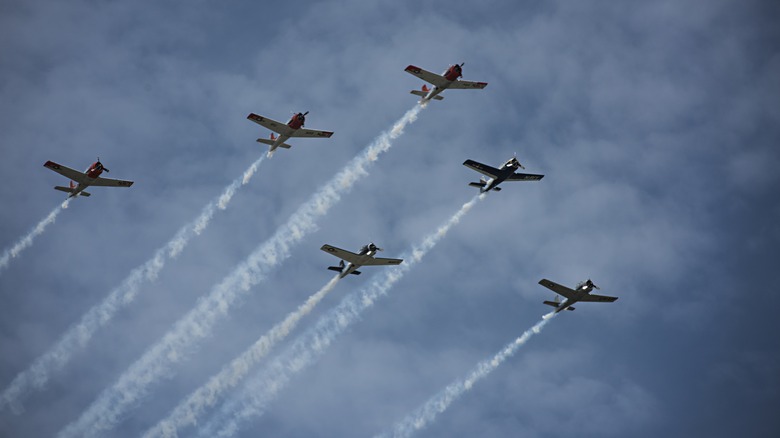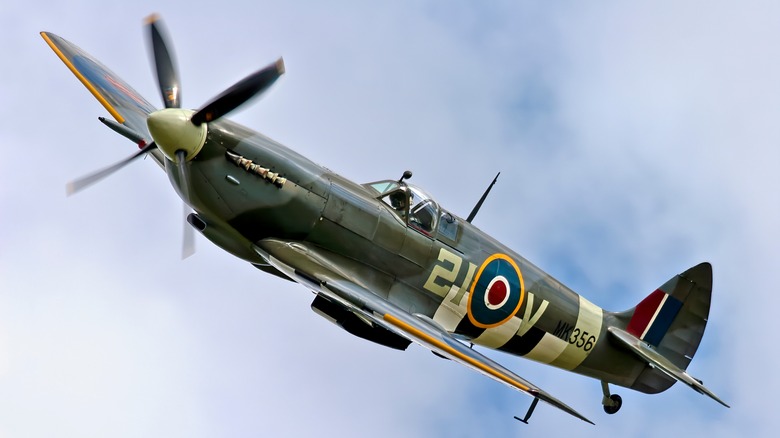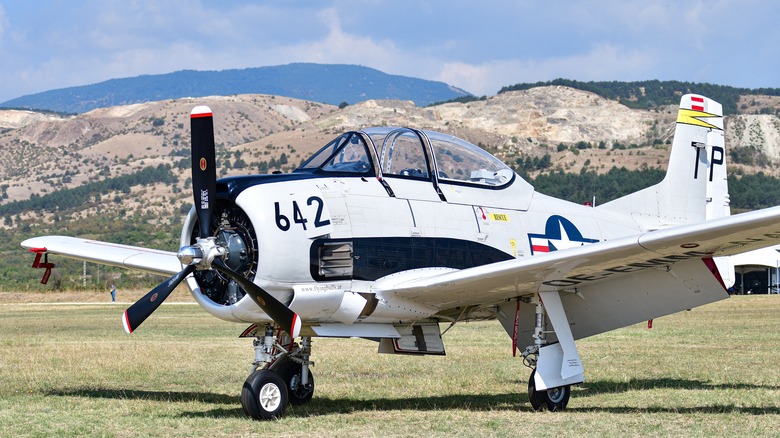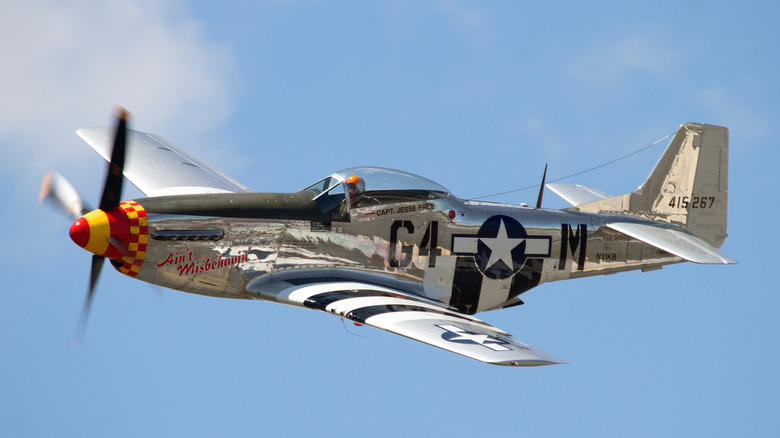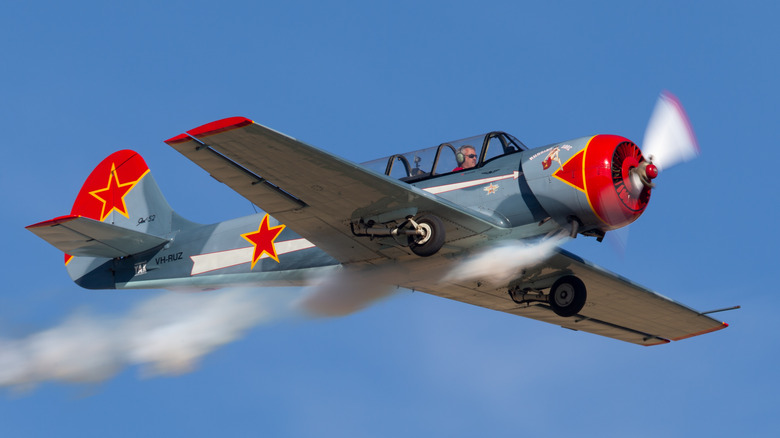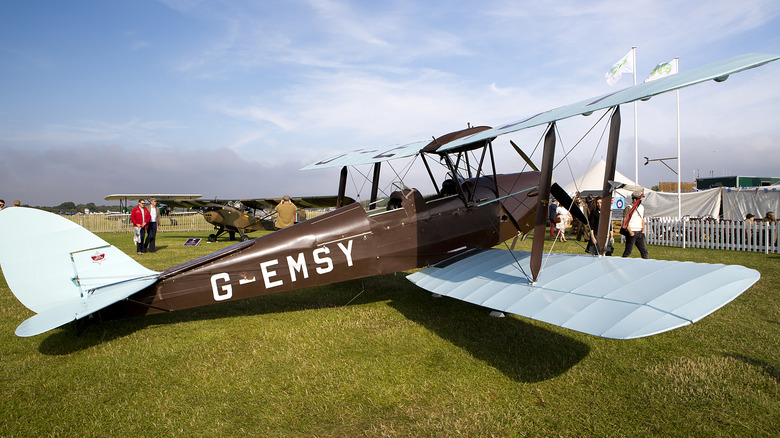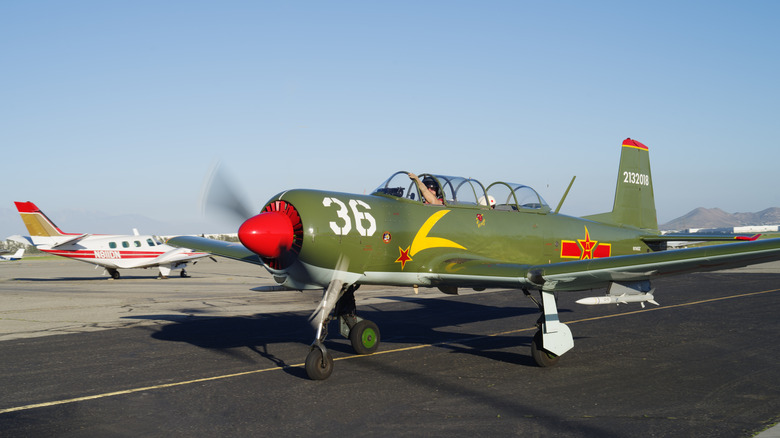6 Classic War Planes You Can Actually Buy
For enthusiasts fascinated by aviation history and owning a piece of military legacy, the idea of purchasing a classic warplane holds a unique appeal. These "warbirds" attract buyers for various reasons beyond mere fascination. The decision to purchase a warplane often stems from a desire to preserve history, engage in aerial exhibitions, or even utilize it for private collection purposes.
Contrary to popular belief, purchasing a warplane is a very feasible endeavor for certain individuals. However, it's important to note that the process involves stringent regulations and logistical complexities. But more importantly, you should know that some classic warplanes are way more expensive than you think — usually, their age is not an indicator of their price either.
If you want to buy a classic warplane, you should consider multiple aspects beyond the initial purchase cost. Maintenance expenses, availability of spare parts, regulatory compliance, and expertise required for operation are just some of them. Moreover, the intended use of the aircraft, whether for display, aerial shows, or private flights, significantly influences the type of warplane suitable for purchase.
All that being said, not all classic warbirds are for sale due to rarity or regulation. So, here are six classic warplanes you can actually buy, especially if money is not an issue.
Supermarine Spitfire
The Supermarine Spitfire, arguably one of the best fighter planes and jets of all time, is a classic warplane born from Reginald J. Mitchell's racing seaplane success. The Spitfire became an iconic symbol of British air power during World War II — so iconic that it's featured in movies like Dunkirk and even among the 10 rarest vehicles in Brad Pitt's collection. Developed in response to the Air Ministry's call for a new fighter plane, the Spitfire Mk. I, equipped with a Rolls Royce Merlin II engine and eight machine guns, debuted in 1936, impressing the Royal Air Force (RAF) with its speed and aerodynamic design.
With the Spitfire, if you can afford it at over $3.5 million, you are buying into its interesting history as well. During the Battle of Britain, Spitfires, along with Hawker Hurricanes, faced the Luftwaffe's onslaught. The Spitfire's role evolved, with later versions like the Mk. VC, and played pivotal roles in repelling the Luftwaffe. The Spitfire continually improved throughout the war, with the Mk. XIV, powered by a Rolls-Royce Griffon engine, reaching speeds of 448 mph and having a ceiling of 44,500 ft.
Beyond its combat abilities, the Spitfire had diverse roles, serving as a photo-reconnaissance aircraft and even participating in somewhat unconventional activities, such as delivering beer to Allied service personnel post-invasion of France. The naval version, the Seafire, operated with the Royal Navy's Fleet Air Arm and continued its service until 1954.
North American T-28 Trojan
The North American T-28 Trojan served a multifaceted role, from advanced training to combat missions, and it's one of the more affordable but still expensive warbirds you can buy. Manufactured by North American Aviation, known for iconic aircraft like the P-51 and F-86, the T-28 took to the skies in 1949 as a replacement for the aging T-6 Texan. Primarily utilized as an advanced trainer, its tandem seat and radial engine design provided an easy transition for pilots moving to jet fighters, emulating the feel of contemporary aircraft like the F-86 Sabre.
The T-28s came in various models, such as the -A for the USAF and -B and -C for the USN. The T-28B had a robust airframe and a 1,425 horsepower engine and became a stalwart in naval training, serving until the early 1980s. The -C variant, engineered for carrier landings, featured a tail hook and modifications to endure the rigors of naval operations. The -D model came with armor, weaponry, and self-sealing fuel tanks for close air support and ground attacks. Its service wasn't confined to Vietnam, as it found purpose in global conflicts, from the Philippines to the former Belgian Congo.
As military service waned, the T-28 found a second life in civilian hands in the 1980s. Today, approximately 350 T-28s are registered globally, with nearly 300 in the United States, according to NATA. You can still catch the T-28 in air shows through flight demonstration teams like Trojan Thunder and Trojan Phlyers.
P-51 Mustang
The P-51 Mustang is another well-known warbird you can buy, but it's out of reach for most people with its $3 million price tag. Originally conceived to meet the urgent need for increased fighter strength during World War II, this aircraft quickly became one of the greatest in history.
The RAF's early deployment of the Mustang marked its initial foray into combat, revealing its skills in armed reconnaissance. However, the transition to the Rolls-Royce Merlin engine truly elevated the P-51 to greater heights (literally!). With this upgrade, the Mustang became a long-range escort, enabling daylight bombing raids over Germany. It is often called "the engine that helped win WWII." Its aerodynamic design, featuring a laminar flow wing, reduced drag, and increased speed, contributing to its superiority over other fighters.
The P-51D is especially noteworthy as the most prolific model among its variants. This model reached a maximum speed of 437 mph at 25,000 feet, pivotal in the air war over Europe. The game-changing aspect of the P-51 was its extended range, allowing it to escort bombers to Berlin, shifting the dynamics of aerial warfare.
Beyond its military significance, the Mustang became popular due to its pilot-centric design. Engineers prioritized pilot comfort, ensuring the controls were easily accessible and visibility was excellent. Post-war, the P-51 continued its service, seeing action in the Korean War and remaining in service with the U.S. Air Reserves and National Guard units. Surplus P-51s found homes in numerous air forces worldwide.
Yakovlev Yak-52
The Yakovlev Yak-52 from the Cold War era emerged from the Soviet Air Force's primary training fleet during the latter stages of the Cold War and nails the warbird look most enthusiasts are looking for. Serving as a successor to the Yak-50, the Yak-52's design was typical, featuring a tandem two-seat configuration, straight monoplane wings, and a nose-mounted propeller. According to research by Military Factory, its maiden flight in 1976 marked the beginning of its service in 1979, with approximately 1,800 units produced by the Soviet Union.
Initially designed for military training, the Yak-52's adaptability found expression in aerobatics and racing, owing to its lightweight frame and rugged design. The aircraft also underwent evolutionary changes like the Yak-52M, which was equipped with a Vedeneyev M-14Kh radial piston engine and upgraded avionics. The Yak-52s have an all-metal construction, retractable tricycle landing gear, and a Vedeneyev M-14P engine.
The aircraft has decent performance as well, including a maximum speed of 177 mph, a cruise speed of 118 mph, and a range of 340 miles. The aircraft's service ceiling of 13,125 feet and a rate of climb of 1,380 feet per minute underscored its prowess in training and aerobatic maneuvers.
The Yak-52's unique classification as an "Experimental Exhibition" aircraft by the FAA, typical for foreign and military planes, imposes limitations on commercial as well as regular use and usually means getting extra certifications from the FAA. You can find the Yak-52 in the $50,000 range.
de Havilland DH.82 Tiger Moth
The de Havilland DH.82 Tiger Moth is a World War training aircraft that's surprisingly cheap. With over 9,000 units produced in total, it played a major role in training fighter pilots across the U.K., Canada, Australia, and New Zealand. Initially developed from the DH.60, the Tiger Moth became synonymous with simplicity and ease of flying, making it a favorite in flying schools and clubs. Its fame extended beyond training, with wartime applications including air ambulance and prisoner evacuation. Interestingly, the Tiger Moth's name stems from its designer's interest in moths, and it shows in the distinctive design feature of retractable wings.
During World War II, the Tiger Moth II became the primary training aircraft for the Empire Air Training Scheme. Although considered for roles like gunnery and bombing, its reputation primarily rested on its training capabilities. Notably, Americans training with the Eagle Squadrons used the Tiger Moth before the U.S. officially entered the war. Production was not limited to the U.K.; Canada, Australia, and New Zealand contributed significantly to meet wartime demands.
Today, approximately 250 Tiger Moths remain airworthy, with an increasing number restored for display. In terms of cost, an airworthy Tiger Moth may range from $70,000 to $80,000, but you also might want to consider additional expenses for hangarage, insurance, fuel, and maintenance.
Nanchang CJ-6
The Nanchang CJ-6, a Chinese Cold War-era aircraft, is a tandem-seat basic flight trainer and light attack aircraft that falls into the same category as the Yak-52 — in fact, the CJ-6 is believed to be a redesigned version of the Yak-18. Manufactured by the Hongdu Aircraft Industry Group in 1958, it entered operational service in 1960 and continues to serve globally with Chinese allies. Over 2,000 airframes might have been produced, with the People's Liberation Army Air Force (PLAAF) of China being the primary operator.
The CJ-6 features a basic design with a low-set straight monoplane wing and retractable wheeled undercarriage. The tandem seating arrangement accommodates the student and instructor in line under a lightly-framed canopy. When it comes to the powertrain, the CJ-6A was initially powered by a Zhuzhou Huosai HS-6 radial piston engine of 260 horsepower, but the improved ZH HS-6A engine with 285 horsepower was introduced for better performance.
This radial piston engine propels the aircraft to 190 mph, covering a range of 430 miles and reaching a ceiling of 20,510 feet. The reason enthusiasts are seeking the CJ-6 is two-fold: it's easy to fly, and the price tag is relatively low compared to other warbirds. You can find the CJ-6 on sites like Trade-A-Plane for as low as $86,000.
